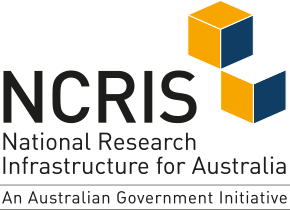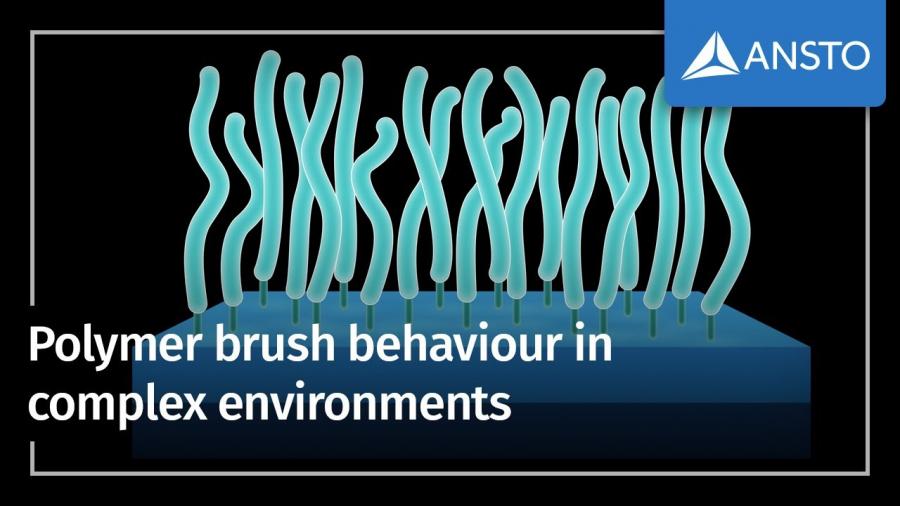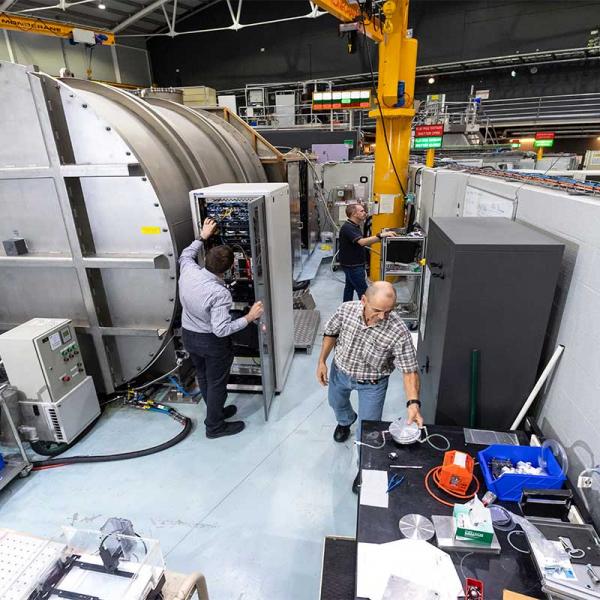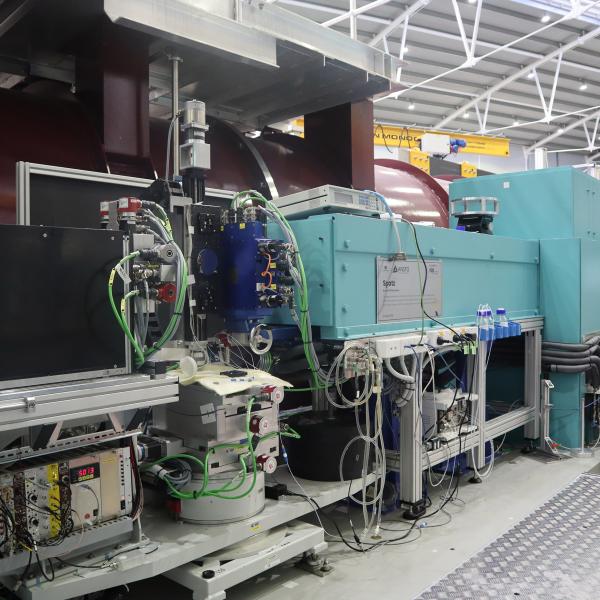

Published on the 1st July 2021 by ANSTO Staff
Key Points
-
Research is providing a better understanding of the behaviour of polymer brushes in complex salt and solvent environments
-
Polymer brushes are used in environmentally friendly cleaning products, environmental remediation, minerals processing, biotechnology, sensors, drug delivery, and membranes
-
Neutron scattering experiments at ANSTO provide crucial information at the interface of the polymer brush and the substrate
The University of Newcastle and UNSW Sydney are using advanced neutron scattering techniques at ANSTO to carry out research on the structure of polymers in complex salt environments that will ultimately provide a way to predict their behaviour for real-world applications.
The subject of the research is polymer brushes, densely packed arrays of polymer chains that are tethered to flat surfaces for use in environmentally-friendly cleaning products, environmental remediation, minerals processing, biotechnology, sensors, drug delivery, and membranes.
The behaviour of many of these applications is determined largely by the interface between the polymer and the surface substrate and the nanostructure of the brush.
An integrated multi-year research program, led by Prof Grant Webber and Prof Erica Wanless at the University of Newcastle, A/Prof Stuart Prescott at UNSW, and Dr Andrew Nelson from ANSTO, is examining and fully characterising the convoluted behaviour and properties of polymer brushes in complex environments; mixed electrolytes and non-aqueous solutions.
They are particularly interested in stimuli-responsive polymers. For example, the polymer chains are very ‘hairy’ at low temperatures but at high temperature, the brushes collapse onto the surface, with different salts altering the collapse temperature.
Past and current investigations have relied on neutron reflectometry, because of its unique ability to characterise the interface at a nanoscale.
“Experiments using the neutron reflectometer Platypus and Spatz provided in situ information about structural changes to the polymer molecules in real time,” said instrument scientist Dr Andrew Nelson.
“The development of dedicated sample environments for the polymer brushes by A/Prof Prescott and data analysis software by his recent PhD graduate Isaac Gresham, means we are really well set up for these experiments,” said Nelson.
Nelson said that “ANSTO’s neutron reflectometers are well suited to study fast kinetic reactions, and ANSTO has world-leading software for acquiring and analysing the data.”
The integrated research team has published eleven journal articles, including a recent study on polymer responses to confinement in response to temperature from Isaac Gresham et al. in Macromolecules and a related study on polymer responses in the presence of mixed electrolytes by Hayden Robertson et al. in the Journal of Colloid and Interface Science.
Robertson, a PhD candidate at the University of Newcastle, was recently awarded the Ezio Rizzardo Polymer Scholarship by the Australian Academy of Technology and Engineering (ATSE) for his research on improving the understanding of stimulus-responsive polymers to make smart interfaces with tunable properties.
“What is important about their behaviour is whether the seaweed-like molecules that are attached to a surface are collapsing or expanding in the presence of different salts or solvents,” said Robertson.
“The behaviour of these polymer brushes in water is pretty well understood, but what we are interested in are the interactions between the polymers in the presence of different ions, a mixture of ions or in different solvents, such as propylene carbonate,” he added.
“In nature and industrial settings, you will never have only water, it will be a combination of lots of different ions and solvents. We are trying to understand the myriad interactions that arise in complex environments.”
Although an understanding of specific ion effects dates back to work by Franz Hofmeister in the late 19th century, who figured out there was a specific order to an ion's ability to precipitate out egg white proteins in solution, known as the Hofmeister series, it did not explain behaviour in different, more complex systems.
“We do not have a universal theory to predict how these polymers will respond to different chemical environments. Such a predictive theory is required to advance to applications.”
Robertson and associates will be investigating further with more experiments on Platypus and Spatz and other techniques, such as ellipsometry. The experimental data gathered on Platypus is being used to inform computational models, aiming to establish a predictive model for the behaviour of the polymer brushes in complex environments.
“Our goal is to better understand how to engineer surfaces and the molecular interactions that occur at them,” said Prescott.
The team is working with industry partners to use this knowledge in the development of environmentally friendly cleaning agents for household/personal care products, and more water-efficient mineral processing additives for the Australian mining industry.
Cosmos featured this research in a recent Briefing.
Research at the Australian Centre for Neutron Scattering is enabled by:







